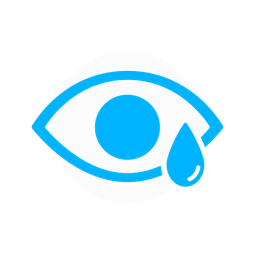It’s possible to have contact lenses and eyeglasses that you can switch between. But it’s important to remember that a contact lens and eyeglass prescription are not the same. So, you’ll need your eye doctor to provide both prescriptions if you want to have each correction option available.
Ensuring you have the right prescription for your lenses or glasses is essential for maintaining optimal vision and eye health. This highlights the importance of regular comprehensive eye examinations, as your eye doctor recommends.
When you call your eye doctor to make an appointment for contact lenses, make sure you specify that as your eye doctor often takes extra steps in determining eye health and measurements for contact lens wear.
Understanding Contact Lens & Eyeglass Prescriptions
At first glance, a contact lens and eyeglass prescription seem interchangeable since both aim to correct refractive errors like myopia, hyperopia, or astigmatism. But there are key differences.
What’s in an Eyeglass Prescription?
An eyeglass prescription is designed to correct vision at a distance from your eyes, which is the distance eyeglasses sit from your eyes. It contains measurements such as:
- Sphere (SPH): Indicates the degree of nearsightedness or farsightedness.
- Cylinder (CYL) and axis: These correct astigmatism caused by an irregularly shaped cornea.
- ADD: For bifocals or progressive lenses; this accounts for presbyopia, a condition common with aging that affects near vision.
Contact Lens Prescription Components
Contact lenses rest directly on the eye’s surface, which changes how corrections are calculated. A contact lens prescription typically includes the following:
- Base Curve (BC): Determines the curvature of the lens to fit the shape of your eye correctly.
- Diameter (DIA): The size of the lens, ensuring it fits snugly.
- Brand and material specification: Contact lens prescriptions also specify brands and materials approved for your eyes, as manufacturers vary in size and texture.
- Power (PWR): The strength of the lens to correct vision.
Contact prescriptions are tailored to your cornea’s shape and size and must account for the way lenses adapt to your tear film and eye structure. Eyeglasses can’t capture these variables. This is why your eye doctor will typically take additional measurements and perform extra testing before providing a contact lens prescription.
Key Differences
- Fitting: Contact lenses require additional measurements, such as the base curve and diameter, for a proper fit.
- Strength adjustment: Since contact lenses sit directly on your eyes and eyeglasses rest further away, prescriptions often differ in strength.
Ultimately, trying to use one for the other can lead to discomfort, blurry vision, or even eye strain.

Factors Affecting Prescription Changes
Vision changes are a natural part of life and can be influenced by various factors, including:
- Age: Children and young adults may experience shifts in prescription as their eyes grow, while adults often confront presbyopia as they age.
- Health conditions: Diseases like diabetes or hypertension can affect your eyes.
- Lifestyle habits: Excessive screen time, poor lighting, or infrequent breaks while reading can contribute to visual strain or alteration.
These changes make it vital to schedule regular eye exams. The Canadian Association of Optometrists recommends a comprehensive examination every 1 to 2 years, depending on age and other risk factors.
Tips for Proper Lens Care & Maintenance
Whether you choose eyeglasses or contact lenses, proper care is essential to protect your eyes and extend the life of your lenses. Eyeglasses care includes:
- Clean regularly: Use a microfiber cloth and gentle lens cleaner, and don’t neglect cleaning the frames as well
- Protect from scratches: Store in a case when not in use and avoid placing them face-down
- Adjustments: If your glasses feel loose or out of alignment, have them adjusted by a professional
Contact lens care revolves more around personal hygiene and includes:
- Follow the schedule: Stick to prescribed wear schedules to avoid infections or other complications related to improper lens wear
- Clean thoroughly: Use fresh contact lens cleaning solution daily for soaking lenses and never rinse with tap water
- Good hygiene: Always wash your hands before handling lenses to prevent introducing contamination or infection-causing germs
Improper care, particularly with contact lenses, can result in serious complications such as corneal infections or irritation.
Why Regular Eye Exams Are Essential
Your eyes are constantly evolving, and even slight changes in prescription can impact your quality of life. By keeping up with regular eye exams, you:
- Ensure your prescription is always optimized
- Detect early signs of eye conditions that might otherwise go unnoticed
- Maintain overall eye health and comfort
Book an Eye Exam Today
Contact lenses and eyeglasses are integral components to clear vision in spite of any eye conditions or refractive errors, but they aren’t a one-size-fits-all solution. With different prescriptions, ideal uses, and maintenance needs, there are several things to consider.
Call our team at See Eye Clinic today and book an appointment. One of our experienced eye doctors can examine your eyes and help you determine whether eyeglasses or contact lenses are right for you.




















